Mannequin

Brief Synopsis
Cast & Crew
Lew Borzage
Joan Crawford
Spencer Tracy
Alan Curtis
Ralph Morgan
Mary Phillips
Film Details
Technical Specs

Synopsis
Jessie Cassidy yearns to escape the squalor of her family's Hester Street apartment so strongly that she convinces her boyfriend, Eddie Miller, to marry her. At their wedding supper in a Jewish-Chinese restaurant, self-made shipping tycoon John L. Hennessey sees them and buys them a bottle of champagne. Eddie tries to impress John, but Jessie, with her sweet devotion to Eddie, impresses him more. Eddie takes Jessie to a nice apartment, then tells her that she can give up her garment factory job to work in a chorus in a Broadway show, just until he gets a break. Several months later, Jessie is still in love, despite her friend Beryl Lee's warnings that Eddie is good-for-nothing. Hennessey is giving a party for the people in the show and Eddie convinces the reluctant Jessie to go. Hennessey, who has been giving parties only on a pretext of seeing Jessie, makes a pass at her, which she rebukes with a slap. Even more enamoured of her, Hennessey doesn't hesitate to loan her a hundred dollars after she and Eddie are kicked out of their apartment by the real tenents and Eddie is arrested for bookmaking. Eddie, aware of Hennessey's love for Jessie, suggests that she divorce him, marry Hennessey, then divorce Hennessey for a large settlement. Finally seeing what kind of man Eddie is, Jessie leaves him. Some months later, she returns the money to Hennessey and they start to see each other. She promises to marry him, even though he knows she doesn't love him, and they plan a European trip, accompanied by Beryl. Eddie goes to Jessie and warns her to carry through his idea, but when Hennessey arrives, he throws Eddie out, even though he does not know the real purpose of the visit. After they marry, Jessie realizes that she loves Hennessey and is completely happy in their honeymoon cottage in Ireland. They soon receive a cablegram from Hennessey's assistant Briggs, advising them that labor unrest necessitates their return home. While Hennessey goes to his men, hoping that they will stop their strike and save their company, Jessie confronts Eddie. He tries to blackmail her, but she says that she will leave Hennessey before seeing him hurt. Just before she is about to leave him, however, Hennessey comes home. She lies that she never loved him until Eddie walks in and tells her that Hennessey is now broke and "in the gutter" just like him. He also tells Hennessey about his idea for Jessie to marry him for money. After Eddie leaves, Hennessey refuses to listen to Jessie's insistence that she loves him until she convinces him that she will stay by him no matter what and that the money from the sale of her jewels will give them a new start.

Director
Lew Borzage
Cast
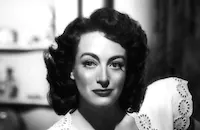
Joan Crawford

Spencer Tracy
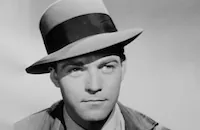
Alan Curtis

Ralph Morgan
Mary Phillips
Oscar O'shea

Elizabeth Risdon

Leo Gorcey

Frank Puglia
George Chandler
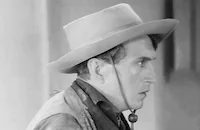
Paul Fix
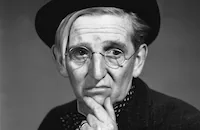
Jimmy Conlin
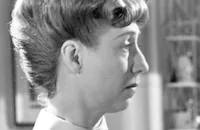
Marie Blake
Matt Mchugh
Helen Troy

Phillip Terry
Bert Roach
Viola Callahan

Eddie Gribbon
James Blaine
Mitchell Ingraham
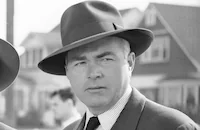
James Flavin
Francis Ford
Joe E. Marks
Donald Kirke
Douglas Wood
Harvey Clark
Maurice Samuels
Jack Kennedy
Mary Gordon
Hal Le Seuer
Jessie Graves
Frank Jaquet
Orville Caldwell
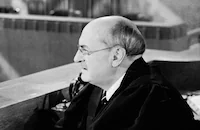
Granville Bates
Wade Boteler
Frank Shannon
Edith Trivers
Nino Bellini
Chester Gan
Russ Clark

Gwen Lee
Virginia Blair
James Baker
Ruth Dwyer
Katherine Clare Ward
Kathryn Sheldon
Bonnie Bannon
Crew
Adrian
Frank Borzage
Frank Borzage
Katherine Brush
George Folsey
Chet Forrest
Cedric Gibbons
Paul Groesse
Lawrence Hazard
Joseph L. Mankiewicz
Douglas Shearer
Frederick Y. Smith
Edward Ward
Edward Ward
Edwin B. Willis
Bob Wright

Photo Collections
Videos
Movie Clip



Trailer
Film Details
Technical Specs

Award Nominations
Best Song
Articles
Mannequin
Mannequin (1937) follows the ambitious Jessie on her course out of the urban ghetto, and the various pitfalls she encounters along the way. Desperately in love with Eddie, Jessie marries young and moves with the smooth operator into a deceptively perfect honeymoon apartment. At their wedding celebration, the happy newlyweds meet a wealthy shipping tycoon John L. Hennessey (Spencer Tracy) who also hails from Hester Street and befriends the pair. The ever-shrewd Eddie, more likely to find an angle to exploit rather than a real job, senses Hennessey's attraction to his wife, and encourages a relationship with the hopes of someday profiting from their flirtation.
Beneath the rags-to-riches trappings of Mannequin is a surprisingly dark picture of poverty, considering its genesis in the 1937 Hollywood studio system. Like other Frank Borzage films, Mannequin was about how love could carry people above the most grim and miserable circumstances. And Crawford delivers a very effective performance, both as a girl beaten down by the unrelenting poverty of her Hester Street origins, and as the sincere, love-consumed romantic match to Curtis and Tracy. In regard to her character in Mannequin, Crawford once said, "I took one look at those poor Delancey Street sets and knew I was back home; I was Jessie."
The performances in Mannequin are one of the film's best features, from Tracy's famous endearing naturalism as the industrialist from humble origins, to the snide, wise-cracking irreverence of Jessie's little brother Clifford, played by "Dead End Kid" Leo Gorcey. Phillip Terry, billed as the "man at the stage door" also made a noteworthy appearance in the film, not for his performance, but for the coincidence of later becoming Crawford's third husband.
Mannequin was the first film Crawford made for noted director Borzage (Humoresque, 1920, Seventh Heaven, 1927) and the first and only film she would make with Spencer Tracy. In Crawford's 1971 autobiography My Way of Life, the actress said she and the actor got along famously. Tracy reportedly helped her overcome a bout with pneumonia and taught Crawford how to play polo, though a serious tumble and studio concerns about his safety ultimately caused Tracy to give up the sport.
Crawford remarked of her work with Tracy, "it was inspiring to play opposite Tracy. His is such simplicity of performance, such naturalness and humor. He walks through a scene just as he walks through life. He makes it seem so easy." The affection between the co-stars was so great, Crawford said, that she even created an endearing nickname for Tracy, of "Slug" for the boxer's stance that Tracy adopted when joshing around with Crawford.
By the publication of the 1981 interview book Conversations With Joan Crawford, however, Crawford was singing a different tune. Crawford disclosed to interviewer Roy Newquist, "At first I felt honored working with Spence, and we even whooped it up a little bit off the set, but he turned out to be a real bastard. When he drank he was mean, and he drank all through production." She also added, "He would show up for romantic scenes with beer and onion breath. I was supposed to act all lovey-dovey with him when I wanted to gag. He was like a big child who needed to be spanked."
Mannequin was a hit with audiences and critics at the time of its release but it was overlooked during the Oscar® race except in one category. It received an Academy Award nomination for Best Song ("Always and Always" by Chet Forrest, Edward Ward, and Bob Wright).
Director: Frank Borzage
Producer: Joseph L. Mankiewicz
Screenplay: Lawrence Hazard based on the story "Marry for Money" by Katherine Brush
Cinematography: George Folsey
Production Design: Cedric Gibbons, Paul Groesse
Music: Edward Ward
Cast: Joan Crawford (Jessie Cassidy), Spencer Tracy (John L. Hennessey), Alan Curtis (Eddie Miller), Ralph Morgan (Briggs), Mary Philips (Beryl), Oscar O'Shea (Pa Cassidy), Elisabeth Risdon (Mrs. Cassidy), Leo Gorcey (Clifford Cassidy).
BW-95m.
by Felicia Feaster

Mannequin
Quotes
Trivia
Notes
According to a news item in Hollywood Reporter, M-G-M bought the rights to Katherine Brush's story before its publication in Hearst's International-Cosmopolitan, however, Screen Achievements Bulletin and reviews call it an original, unpublished story. It is possible that the story was originally intended for publication but instead went directly to M-G-M for the film. Modern sources indicate that Brush's story was entitled "Marry for Money." News items also note that Mickey Rooney was supposed to play the role of Clifford Cassidy but was unable to do so because of his assignment on M-G-M's Thoroughbreds Don't Cry (see below). The item also noted that Leo Gorcey had made a one picture deal with M-G-M following his success in Samuel Goldwyn's Dead End. This was the only picture in which popular M-G-M stars Joan Crawford and Spencer Tracy appeared together. They recreated their roles on radio for M-G-M's Maxwell House program in November 1937. Phillip Terry, who played the minor role of "the man at stage door" in the film, was married to Crawford from 1942 to 1946. This was the only film in which they appeared together. According to modern sources, Frank Borzage coauthored the screenplay with Lawrence Hazard, and working titles for the film were Three Rooms in Heaven, Class, Shop Girl and Saint or Sinner.

Miscellaneous Notes
Released in United States 1938
Released in United States on Video June 24, 1992
Released in United States 1938
Released in United States on Video June 24, 1992














